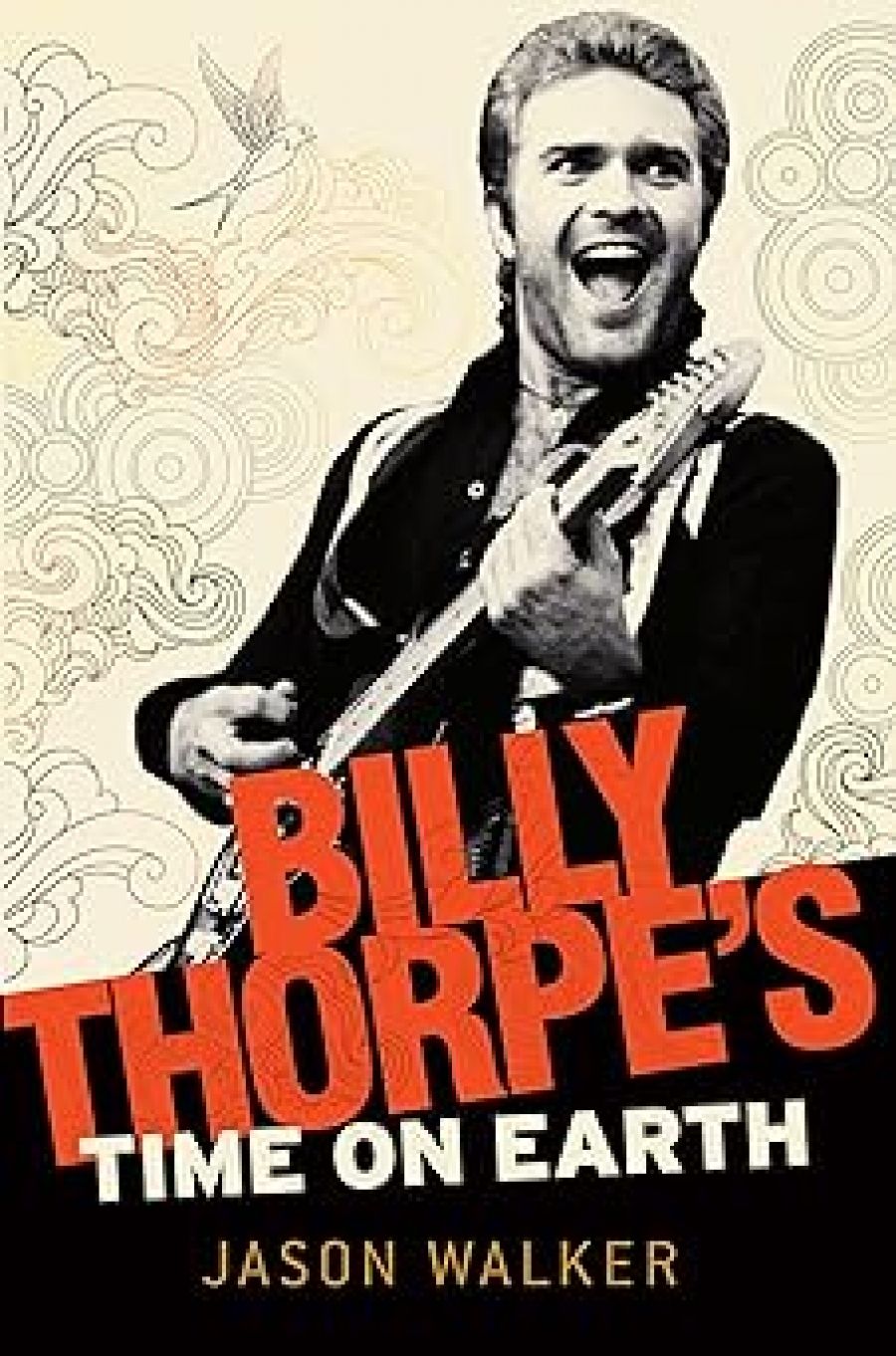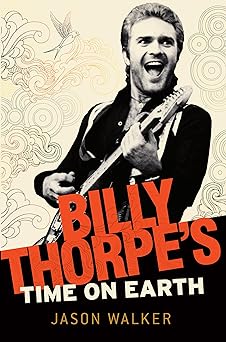
- Free Article: No
- Contents Category: Biography
- Review Article: Yes
- Article Title: Ball of fire
- Online Only: No
- Custom Highlight Text:
Billy Thorpe’s story is the perennial one of an Australian artist dissatisfied with domestic success. In this account of the late pop star’s career, Jason Walker bypasses discussion of Thorpe’s music per se to present him as ‘truly Australian … a battler, a doer [and] a self-promoter’ who lusted for international recognition. While it vividly recounts Thorpe’s life (1946–2007), including enough sex, drugs and equipment fetishism to delight boyish music fans, the real strength of Billy Thorpe’s Time on Earth is its profile of Thorpe’s careerist, provincial psyche and the lengths he went to in search of adoration.
- Book 1 Title: Billy Thorpe's Time On Earth
- Book 1 Biblio: Allen & Unwin, $35 pb, 324 pp
- Book 1 Cover Small (400 x 600):

From the start of his career in 1958, when Thorpe performed numbers by Eddie Cochrane, Jerry Lee Lewis and Hank Williams as ‘Little Rock Allen’ on the Brisbane television show Teen Beat, Walker depicts him as equally talented and constrained by his context. In the first of many speculative projections, Walker comments on how the child star never let the bullying he received at school ‘destroy him … If anything it stimulated in him the desire to believe in the possibilities of an unknown future.’ In the era of Johnny O’Keefe, Carl Perkins, Elvis Presley and ‘bodgie’ culture, Walker depicts Thorpe losing his virginity on the stairs of Brisbane club Birdland before setting his sights for the rock’n’roll life.
The author is excellent on Thorpe’s ascent in Sydney, the colourful Kings Cross scene and the musical context in which instrumental groups the Atlantics, the Tornadoes and Link Wray reigned. Descriptions of contemporary ‘Sound Lounges’ – tiny venues open to city workers taking their lunch – and the network of surf-themed clubs run by Eileen and John Harrigan are among the best in the book. It is the Harrigans who introduce Thorpe to the Aztecs, with whom he will be associated for the rest of his career, and with whom, in 1964, the teen idol achieved his first number one hit (‘Poison Ivy’ by the Coasters).
Tony Barber describes meeting Thorpe – dressed in a silk suit and black leather boots with Cuban heels – in a mode that is repeated throughout the biography: ‘This guy came up – I’ll never forget it. It was Thorpie, as cocky as he ever was and always is. Even then he had that arrogance. He’s never lost it.’ Mick Lieber, sometime guitarist with the Aztecs, similarly comments: ‘Billy was a very arrogant person … [H]e could drop people dead with just a statement.’ This arrogance was to translate as exceedingly loud volume and pummelling, LSD-addled repetitions in Thorpe’s infamous second phase of the Aztecs.
Walker posits that Thorpe’s 1970s persona and the burgeoning festival culture with which he was associated represented an unprecedented moment of self-recognition in Australian pop music: ‘[The Sunbury Festival] showed that what many Australians demanded from “their” bands was simplicity and honesty … evinced by hard-rocking blues.’ Sunbury Festival director Michael Browning’s radical idea was for an all-Australian event inspired by the ‘beer-barns’ scene that was dominated by Thorpe. Browning speaks of Thorpe’s ‘huge following which was very much a cult following in the sense that there were certain rituals like the “suck more piss” chant’, and reflects that ‘it was quite obvious early on that all those people were going to go [to Sunbury]’.
Thorpe quickly grew to begrudge his post-Sunbury fame, ‘piss-sucking Colonel Custer leading the Electric Light Brigade’ image and his parochial audience. Thorpe described his milieu at the time as a ‘dog chasing its own tail’, and declared that he had ‘no horizons left’ in the country. Accordingly, in 1976 Thorpe relocated to Los Angeles and didn’t return to live in Australia for twenty years. Despite his success in the United States with a string of electronic concept albums in the 1980s, work in television and as a corporate toys developer in partnership with Tony Barber, Thorpe’s active influence in Australia expired.
Walker’s lens is that of the Australian rock industry’s maturation and Thorpe’s pivotal role in it – from copycat teen idol to icon of electric stoner blues – with Thorpe as a kind of film recording the vacillations of exposure to fame in Australia. The portraits of Thorpe the restless innovator and of a ‘yobbo’ Australian music audience could not be starker. Far from the ‘thorough appraisal’ that Walker sets out to provide, this biography impresses more as a meditation on the limitations that Australia can set its artists, leaving them with contradictory longings to, in Thorpe’s words, ‘get out if you want to progress’ and a sense ‘that anyone who leaves the country is a traitor’.


Comments powered by CComment